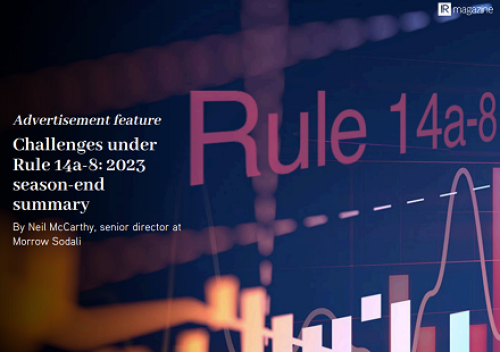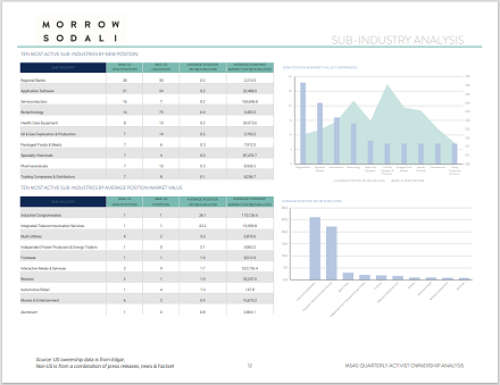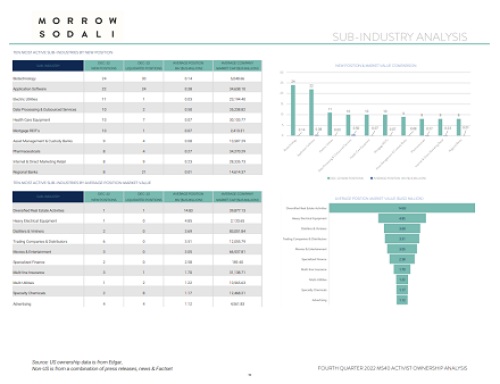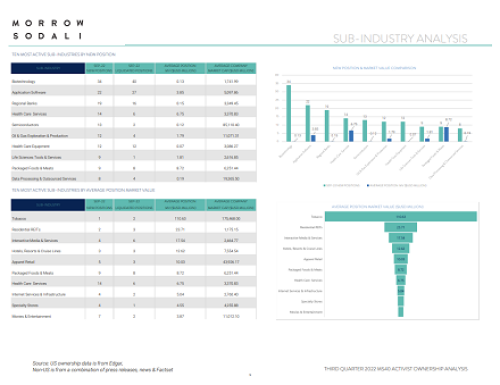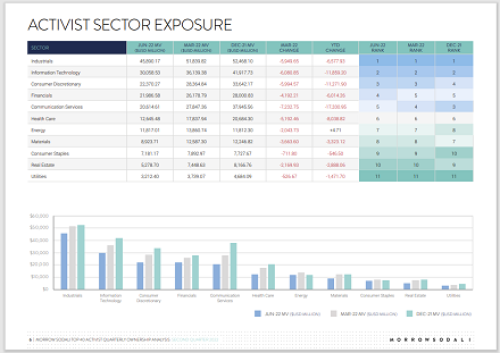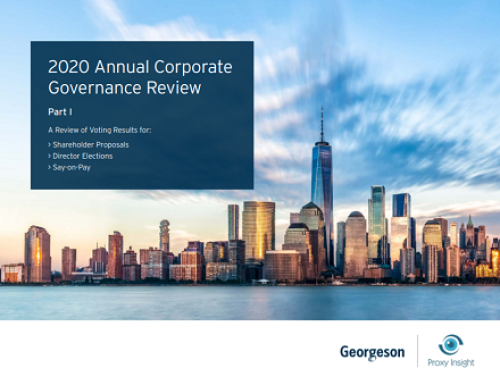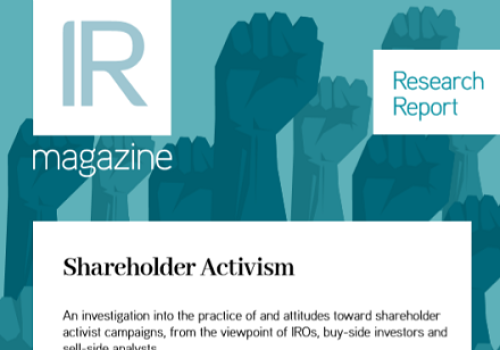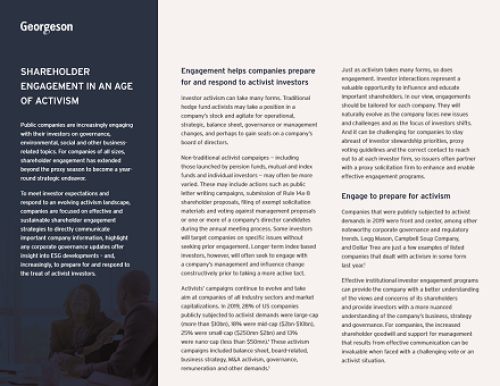Demerged conglomerates increase shareholder value and become easier to understand, finds Ian Williams
Around the globe, laboriously assembled conglomerates are now dividing like mature amebas into their constituent parts. Examples include Fortune Brands, Kraft Foods, McGraw-Hill, Sara Lee, Telecom Corp of NZ and Tyco International, but there are many more. Indeed, Ryan Mendy of specialist research firm the Spinoff Report claims there are some $900 bn worth of demergers, involving more than 100 companies worldwide, on the 2011 calendar.
Time Warner/AOL stands like a huge monument on the corporate horizon, a memorial to the 97 percent of investor value lost in action. Shareholder activist Bob Monks who was, in his own words, kicked off Tyco’s board for disagreeing with its M&A strategy, offers a characteristically cynical view. ‘By and large, the last 30 years have been characterized by the vast enrichment of middlemen and the impoverishment of the principals,’ he laments. ‘That’s because the pattern that goes from conglomeration to spin-off has fees on both sides.’
Monks doesn’t have much time for the building of vast, unfocused conglomerates. ‘It’s never been demonstrated that a conglomerate organization adds value over time,’ he explains. ‘And the divestitures that are now taking place in Tyco are just getting it back down to where it was 15 years ago, before the massive conglomeration carried out by the former CEO Dennis Kozlowski.’
Tyco is far from alone. To many, Kraft’s devotion of time and resources in 2010 to fighting for control of Cadbury in the UK, only to announce a split the following year, might seem like misuse of shareholder funds. But the change announced this year was to separate a steady earner with a mostly domestic grocery business from the growth opportunity of a global confectionery business catering to the world’s increasingly sweet tooth, of which Cadbury is a keystone. In a world that is supposed to be globalizing, however, it’s interesting to see how many demergers involve the decoupling of domestic businesses from global ones.
Whatever the details of each case, there is little choice but to accept that the building up and breaking down of conglomerates is a fact of life. This particular pendulum has been swinging back and forth for decades. But is there anything in particular prompting the current round of spin-offs and divestments? Is it just the product of a sudden burst of common sense? Mere fashion?
Neither explanation seems adequate, and clearly the fact that divestments increase the number of posts available to job-seeking IROs is unlikely to be of interest to the wider world – the world beyond the readers of this magazine, that is.
So it may be more helpful to remember the old adage: follow the money. And there’s no doubt that one reason for the current popularity of demergers is the prospect of improved share price performance by constituent companies. Academics and analysts offer different reasons as to why this should be the case – the benefits of freeing up management teams or the takeover premium a smaller, more focused player can attract – but no one doubts that it’s true.
It’s also true that it applies more obviously during periods of slow growth and uncertain markets. ‘In times like this, when people are conserving their cash, they find it easier to deal with smaller units,’ suggests Monks. ‘So spin-offs are going to command a higher multiple in the short term than conglomerates. You can end up with a venture of a size that’s possible to analyze, understand and – as a manager – add value to, one that is manageable by a single individual who can get his or her head around that particular technology and business.
‘If a company has a diversified collection of components, then I – as an investor – would expect my managers to take advantage of opportunities in the marketplace to make changes.’
Lucrative opportunity
Regardless of the prevalent attitudes to takeovers and mergers, demergers undoubtedly make money for shareholders: Mendy has the statistics to prove it. ‘We’ve been analyzing spin-offs for two decades now and our research indicates that, a year after an effective spin-off, parent share prices achieved an average return of 17 percent, against a -5 percent average return from the S&P 500 and a -4 percent average return from the MSCI over the same period,’ he says.
The divested companies do markedly better as well, according to Mendy’s numbers. Spin-offs achieved an average return of 24 percent, compared with negative average returns for both indices over the same period. ‘And the average gain increases to 38 percent over two years,’ he says.
So where should dizzy IROs being spun-off concentrate their efforts? ‘Consistently, one of the main drivers for a spin-off’s sustained stock price success is the growing number of brokerages and/or analysts tracking the company, and its subsequent inclusion in various tracking indices,’ says Mendy. ‘The market starts paying more attention to the newly listed spin-offs as stock volumes increase gradually and corporate news flows pick up.’
Mendy further advises that tracking shareholders is particularly crucial for IR professionals at spin-off time, not least because the register is bound to change with the split.
Above all, however, the watchword is preparation, which means allowing sufficient time to complete the process. As the Spinoff Report’s research demonstrates, Mendy says: ‘Companies that took more than six months to spin off have generated twice as much increased shareholder value as companies that took fewer than six months.’
Case study: Fortune Brands/Beam
Tony Diaz, as he segues from Fortune Brands to the newly spun-off Beam as vice president of IR, confesses to being a veteran of three demergers. He explains that what the Fortune Brands companies had in common was opportunity: ‘We acquired them and built them, knowing that they could eventually stand on their own merits and thrive.’
Unlike in other M&A stories, Fortune Brands’ stakeholders need shed no tears, Diaz claims. ‘During the crisis, our breadth and balance story worked very well, putting us in a better position than the pure-play companies out there,’ he recalls. ‘We could invest and hold onto our positions, allowing us to gain market share.’
The group announced the changes in October, explaining that Fortune Brands would split into three parts and change its own name into that of the stand- alone liquor business, Beam, which is the only piece it’s retaining. It sold its golf businesses (balls and shoes) to Korean investors for $1.23 bn in cash, and spun off the home and security business to existing shareholders. They received one share in the new slimline Fortune Brands Home and Security for each of their old Fortune Brands shares.
Diaz explains that the group took this action only ‘when the benefits of [splitting up] began to outweigh the benefits of staying together.’
As the fourth-biggest spirits company in the world and the largest in the US, Beam hits the market at a time when premium spirits are rebounding, economic crisis notwithstanding. That may be one reason Fortune’s moves have met with very little resistance from the markets. ‘We focused on the brand analyses,’ explains Diaz, who believes the strategy indicated the company’s shareholder value orientation. ‘People were excited by the opportunity and went along with it.’
Certainly the initial reception of Beam in the stock market was very positive. Indeed, for analysts at Barclays Capital the move couldn’t have come soon enough. They described the company as having been a ‘mismanaged run-for-cash asset, which now has a management team that is fully accountable for its underlying performance.’
Moody’s responded positively too, upgrading its rating of Beam and seeing it as well placed to compete in the spirits market.
And how does that affect the investor relations role? ‘As IRO I’d been telling the three components’ stories to investors with the Fortune Brands strategy overlay, so it was a pretty seamless evolution – a case of building on the core story,’ says Diaz. ‘We began doing separate roadshows a year in advance and I did double-duty with the CEO. As the split got closer, however, people focused more on one side or the other.’
Case study: Sara Lee
When IR magazine talked to her, Melissa Napier, senior vice president for IR at Sara Lee, was just recovering from the sale of her firm’s bakery business – a prerequisite for the split, the IR aspects of which she is now managing.
‘We had two businesses left that were quite different,’ explains Napier. ‘We had one that operated primarily in North America in meats; and a second, a coffee and tea business, which mostly operated in other areas of the globe with a big presence in western Europe, eastern Europe and Brazil – and just a small presence in North America.’
Napier is handling IR for both parts of the group because, she says, ‘we’re still one company. We’re starting to prepare management and leadership structures for the two independent companies, and my counterpart based in Europe is going to be the head of IR for the new coffee company when it spins off.’
There is no decision yet about where the caffeine businesses will list but since Sara Lee is listed in New York and London, there is already a spoon in the pot, as it were. ‘When we came out with the news of our spin-offs, our shareholders received it very positively,’ Napier says. ‘I think that was because they saw it as a logical next step for unlocking shareholder value.’
Sara Lee made the announcement back in January 2011, and there’s still more than a year to go before the split date. ‘The challenge is that your shareholders are all looking forward,’ Napier says. ‘They have all kinds of questions about the specifics of how the two new companies will look post-split. We have to be able to continue telling the story of the company as it is now, as well as preparing for the individual stories after the spin-off.’ In other words, Napier can’t let the story run ahead of itself. ‘We need to keep people focused on the present even as we start to explain the stories about the future – such as why it makes sense for these two new companies to exist as independent entities,’ she explains.
The long lead time, as well as tending to the rules for value growth as laid down by Ryan Mendy of the Spinoff Report (see above), allows time to look at more accurate targeting. ‘As we get closer to the spin-off date, looking at the indices and exchange-traded funds where we’re currently trading, and as we get closer to finalizing the size of these two firms, part of our analysis is looking at which indices and funds we might drop out off, and how we make up for that,’ says Napier. ‘We’ll be doing similar exercises in terms of looking at the current shareholder base for Sara Lee as a whole, and then looking at the right targeted shareholder bases for the new businesses: which ones we expect to retain, and which ones maybe don’t own us because we don’t fit their current profile in our existing form, but we may do after the spin-off.’
Meanwhile, and since Napier spoke to us, Sara Lee has made further moves to narrow the scope of its business: it recently announced the sale of its North American coffee business to JM Smucker for $350 mn.

